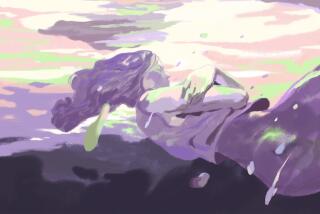Easter Bunnies and Egg on Your Face
- Share via
Guam, 1975: So there we were, me and about 27 Vietnamese refugees en route to new lives in a new land.
For months, two of these brave people had patiently translated for me the words, culture, traditions, values and holidays of their war-torn home. Foreign traditions and values can seem quite quaint compared with our “normal” observances.
Now it was my turn to translate American values and rituals for their eager eyes and ears.
They’d heard something on the radio about a holiday called Easter? Please to explain. Well, I said, it’s a holiday with different meanings for different people. Although it’s a religious day for most, in America, a land of many religions, it also includes nonreligious symbols. Yes, they said, it has something to do with candy, right? Religious candy?
Ah, yes, Easter candy. It’s not religious candy so much as candy for children.
The newcomers wished to teach their own children about this important holiday in their new homeland. How does Easter candy work?
Well, I said, before Easter, parents buy a lot of it. They also buy a lot of chicken eggs and, with the children, dye the eggs.
Dye the eggs? Yes, color them. My friends turned and translated to the crowd of attentive children and silent grandparents, all squatting on the floor next to empty chairs. Some nodded.
OK, so they color the eggs, maybe 24 or 36 of them.
Was there a religious significance to the numbers?
Uh, no. In America, you buy eggs in groups of 12 called a dozen.
Twelve?
Yes, 12.
So you color the eggs. You write on them with wax pens and put them in little decorative baskets with fake green grass.
By now, my lecture was drawing a crowd. So on Easter Sunday morning, the parents tell the children that a giant rabbit broke into their house that night and hid the chicken eggs all over.
Profound silence.
A giant rabbit?
It’s just a story. The parents actually hide the eggs.
My Vietnamese pals exchanged glances and mumbles, then translated for the elders, who stared blankly. A grandfather asked something. My friend turned. How big is the rabbit?
Oh, nobody’s ever actually seen the Easter Bunny. He doesn’t really exist. It’s a story. But presumably he’s big enough to hide the chicken eggs all over.
Are they always chicken eggs?
Pretty much, yes.
Then what?
Well, the children get very excited and run all over the house--sometimes even outdoors--to look for hidden eggs and put them back in the basket.
Why?
It’s just a game.
Then what?
Well, the children find almost all the chicken eggs. The child with the most eggs is the winner.
This was translated to the crowd. What does the winner get?
Nothing really, just congratulations. But every child then gets a lot of Easter candy. They even have chocolate rabbits.
Rabbits covered in chocolate?
No, candy shaped like rabbits. No real rabbits at all.
That’s Easter?
Not all of it. Also, people dress up in good clothes, go to church probably and then have a nice family meal.
What happens to the chicken eggs?
Well, most of them go into the refrigerator to spoil or for school lunches for the next month or two. The family dog finds the rest.
All of this was dutifully translated. Everyone was most polite in the presence of this clearly insane American. I left for someone else the story of the fat man in red who flies around with magic reindeer every December.
Andrew H. Malcolm is a member of The Times’ Editorial Board.
More to Read
Sign up for The Wild
We’ll help you find the best places to hike, bike and run, as well as the perfect silent spots for meditation and yoga.
You may occasionally receive promotional content from the Los Angeles Times.






